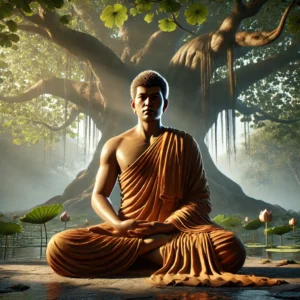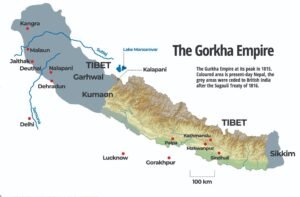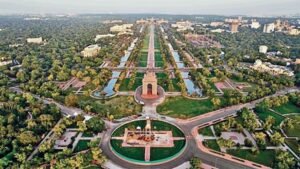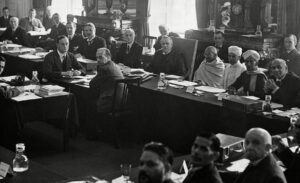
The Mughal Empire, celebrated for its cultural and architectural magnificence, bears the hidden scars of a somber history marked by religious persecution, cruelty, and oppressive anti-Hindu policies. These actions ranged from religious persecution and forced conversions to the destruction of sacred sites and brutal military campaigns aimed at subjugating non-Muslim communities. In this comprehensive exploration, we delve deep into this grim chapter of Mughal history, shedding light on the heinous atrocities inflicted upon non-Muslims, the brutal oppression faced by Hindu communities, and the inspiring sacrifices made by Sikhs in the face of unrelenting tyranny.
Mughal Atrocities: A Legacy of Conquest and Religious Persecution
The Mughal Empire, from its inception under Babur, was marked by systematic aggression and religious intolerance, often targeting non-Muslim communities.
- Babur’s campaigns following the Battle of Panipat in 1526 involved the destruction of Hindu temples and idols, as documented in his memoirs, the Baburnama. His disdain for indigenous religions laid the foundation for Mughal atrocities, which continued under his successors.
- Humayun, though preoccupied with political instability, adopted Shia practices during his exile in Persia and attempted to impose them upon his return, further entrenching religious coercion in Mughal governance.
- Akbar, while celebrated for policies like Sulh-i-Kul, also perpetrated significant violence, such as the massacre of 30,000 civilians after the Siege of Chittorgarh in 1567. His campaigns against Rajput kingdoms and attempts to centralize religious authority through the Din-i Ilahi reflected cultural coercion.
- Jahangir continued this legacy with acts like the execution of Guru Arjan Dev, sparking Sikh resistance.
- Shah Jahan, despite his architectural achievements, destroyed Hindu temples and imposed severe taxes on non-Muslims.
- Aurangzeb’s reign epitomized Mughal atrocities, with the reimposition of jizya, widespread temple destruction, and the execution of Guru Tegh Bahadur. These policies of oppression and forced conversions fueled resistance, leaving a legacy of religious persecution and cultural suppression.
Religious Persecution and Brutality:
Beyond their cultural contributions, the Mughal emperors presided over a reign tainted by religious intolerance and unbridled brutality. Among them, Emperor Aurangzeb stands as an infamous figure in this regard.

Destruction of Temples
Aurangzeb’s reign was marred by the deliberate destruction of countless Hindu temples, a stark symbol of intolerance. Notable among them were the revered Kashi Vishwanath Temple in Varanasi and the iconic Keshava Deo Temple in Mathura. These acts of desecration aimed to suppress Hinduism and establish Islamic dominance.
Jaziya Tax:
Aurangzeb imposed the jaziya tax, a punitive levy exclusively targeting non-Muslims. Those who resisted payment faced severe penalties, and in some instances, death.

Conversion Coercion:
Non-Muslims lived under the constant threat of forced conversion to Islam, a practice that reached its zenith during Aurangzeb’s reign.
Violence Against Non-Muslim Men:
Non-Muslim men bore the brunt of the brutality inflicted by the Mughals. Massacres and excruciating torture were tragically common.
Massacres:
In the midst of religious conflicts and uprisings, Mughal forces perpetrated gruesome massacres of non-Muslim men. One of the most harrowing incidents unfolded during the Jats’ rebellion in Mathura in 1669, where thousands of non-Muslim men met a ruthless end.

Torture:
The torturous methods employed by the Mughals to extract wealth or compliance from non-Muslims were horrifying. Many endured agonizing torment, including brutal limb mutilation.

Enslavement of Non-Muslim Women:
Non-Muslim women, especially Hindus, were not spared from the horrors. They faced abduction, enslavement, and forced marriages during Mughal conquests and invasions.
Abduction and Enslavement:
Non-Muslim women were frequently subjected to abduction and forced into lives of servitude. They often endured sexual exploitation, living in perpetual fear.
Forced Marriages:
Many non-Muslim women were forcibly married off to Mughal soldiers or nobility against their will, condemning them to a life of subjugation and suffering.
Resistance and Revolts
Despite the suffocating oppression, some Hindu and non-Muslim communities exhibited remarkable resilience in the face of Mughal tyranny. The Marathas, Sikhs, Rajputs, and others waged fierce wars of independence, vehemently safeguarding their faith and culture.
The Siege of Chittorgarh (1567-1568)
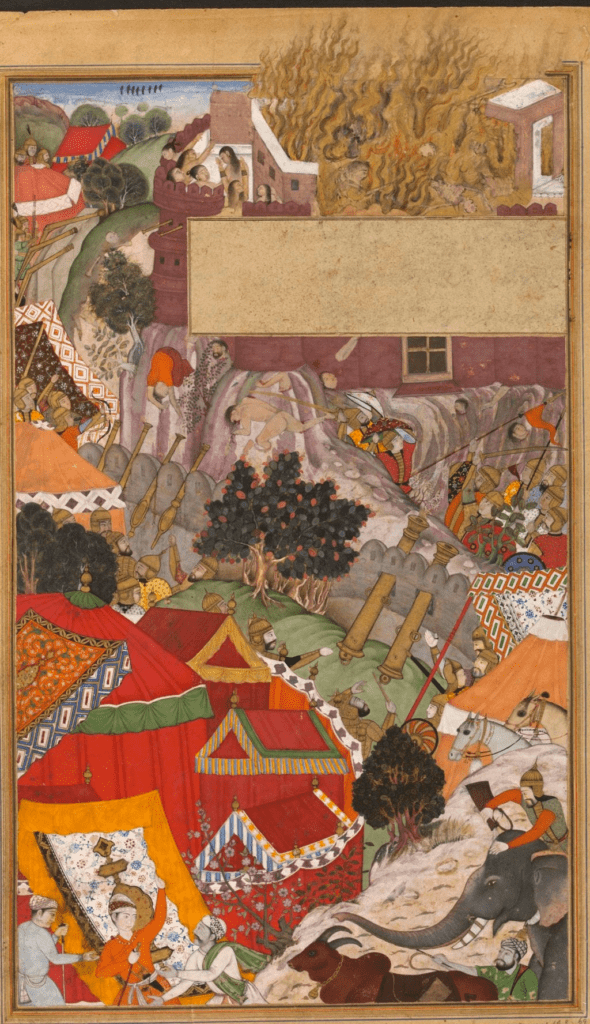
One particularly distressing event was the siege of Chittorgarh, a symbol of Rajput valor. Under his expansionist policy, Akbar initiated the siege in October 1567, imbuing it with a religious dimension by declaring it a Jihād against the “infidels.” Rana Udai Singh, the Sisodia ruler, wisely retreated to the mountainous principality of his kingdom and entrusted the fort’s defense to Jaimal Rathore.
After more than four months of relentless back-and-forth, the impasse was broken when Jaimal fell victim to a musket shot fired by Akbar on February 22, 1568. The following morning, on the auspicious day of Holi, the fort finally succumbed after a gallant resistance by the Rajputs. Akbar proclaimed the conquest of Chittor as a triumph of Islam over infidelity.
In the wake of the fort’s subjugation, Akbar ordered a horrific general massacre of Chittor’s population. This merciless campaign claimed the lives of 30,000 Hindu civilians, and a significant number of women and children were mercilessly enslaved. Akbar then placed the fort under the command of his general, Asaf Khan, before returning to Agra.
Sikh Martyrs
Guru Arjan Dev Ji, Guru Tegh Bahadur Sahib Ji, and More:
The Mughal Empire’s reign of terror extended to the Sikh community, where Guru Arjan Dev Ji faced a harrowing fate at the hands of Emperor Jahangir. Fearing the growing influence of Guru Arjan’s teachings, Jahangir ordered his execution, which eventually took place despite attempts to spare him.

Guru Tegh Bahadur Sahib Ji, another revered Sikh Guru, stood up against the religious oppression imposed by Emperor Aurangzeb. His courageous defense of religious freedom and his ultimate sacrifice earned him the title “Hind Di Chadar” (The Shield of India).
The accounts of Bhai Sati Das, Bhai Mati Das, Bhai Dayala, Bhai Taru Singh Ji, and many other Sikh martyrs exemplify the unwavering faith and resilience of the Sikh community in the face of brutal persecution.

Mass Torture and Persecution:
Zakariya Khan, the Mughal governor of Lahore, unleashed a reign of terror against the Sikh population. He ordered the capture of Sikhs, leading to widespread violence. Prominent Sikhs, including Bhai Mani Singh, faced torture and execution.
Mughal Violence on Sikh Women and Children:
Sikh women held as prisoners in Mir Mannu’s Jail in Lahore during the 18th century endured unimaginable hardships. Despite the pain of having their children murdered and made into garlands, they maintained their unwavering faith and resilience.
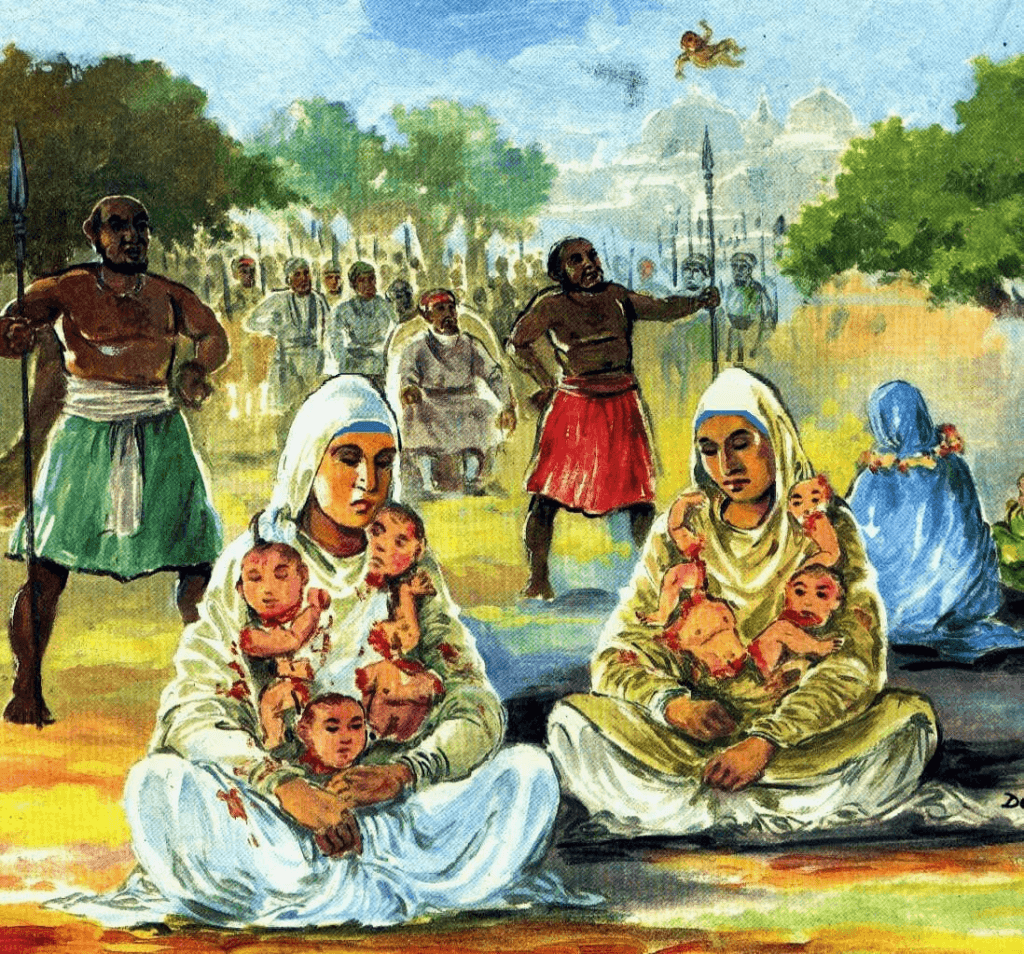
The Decline of the Mughal Empire and Continued Persecution
Resistance Movements and the Empire’s Downfall
Aurangzeb’s policies of religious intolerance and military aggression led to widespread resistance across the Mughal Empire. The Marathas, under the leadership of Shivaji, posed a formidable challenge to Mughal authority, while the Rajputs fiercely rebelled against Aurangzeb’s oppressive rule. These uprisings, coupled with the strain of relentless military campaigns, significantly weakened the empire and accelerated its decline. By the time of Aurangzeb’s death, the Mughal Empire was already fractured, with regional powers rising to fill the vacuum left by its diminishing influence.
Legacy of Mughal Oppression
The legacy of Mughal oppression, marked by systematic temple destruction, forced conversions, and heavy taxation on non-Muslims, left enduring scars on the Indian subcontinent. The religious persecution inflicted upon Hindu, Sikh, Jain, and Buddhist communities deeply disrupted the social and cultural fabric of the region. The conflicts and divisions sown during this era continue to influence communal relations in modern times, serving as a reminder of the devastating impact of policies rooted in intolerance and subjugation.
While the Mughal Empire is often remembered for its cultural and architectural achievements, it is impossible to overlook the dark chapters of its history. The brutal persecution of non-Muslim communities and the suppression of their religious and cultural practices highlight the empire’s ruthless pursuit of power and control. This dual legacy of cultural brilliance and systematic oppression underscores the complexity of the Mughal era, offering critical lessons for understanding the interplay of power, religion, and resistance in history.
References
- Singh, K. (1963). A History of the Sikhs. Princeton: Princeton University Press.
- Alam, M. (1998). The Crisis of Empire in Mughal North India. Delhi: Oxford University Press.
- Asher, C. B. (1992). Architecture of Mughal India. Cambridge: Cambridge University Press.
- Brown, K. (1994). Humayun. London: Oneworld.
- Eaton, R. M. (2000). Temple Desecration and Muslim States in Medieval India. Oxford University Press.
- Eraly, A. (1997). The Mughal Throne: The Saga of India’s Great Emperors. London: Phoenix Press.
- Grewal, J. S. (1998). The Sikhs of the Punjab. Cambridge: Cambridge University Press.
- Habib, I. (1981). Akbar and His India. Delhi: Oxford University Press.
- Kulkarni, A. R. (2001). Maharashtra in the Age of Shivaji. Delhi: Oxford University Press.
- Majumdar, R. C. (1974). The History and Culture of the Indian People. Mumbai: Bharatiya Vidya Bhavan.
- Richards, J. F. (1995). The Mughal Empire. Cambridge: Cambridge University Press.

